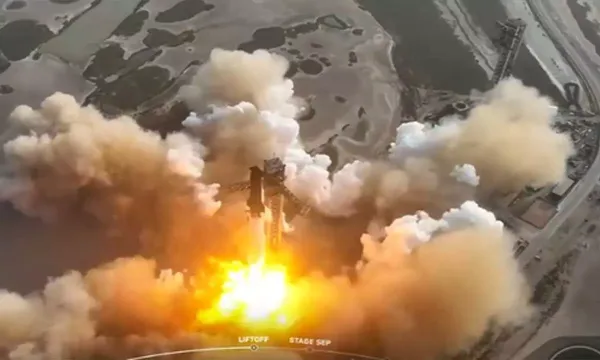
Elon Musk, the creator of SpaceX, blamed fuel leakage for the explosion that occurred during the splashdown of the Starship mission during its ninth test on Wednesday.

The Starship flight has had problems during the test flight for the third consecutive trip. The company’s last two test flights, the seventh in January and the eighth in March, similarly ended abruptly when the aircraft was destroyed.
Launched from the company’s Starbase launch pad in Texas at about 7:36 p.m. EDT (5:06 a.m. IST), Starship’s ninth test mission successfully entered orbit, traveling further than its two prior efforts.
Simulated Starlink satellites were supposed to be released, but the spacecraft’s cargo bay door did not open. SpaceX confirmed that the vehicle had a fuel tank leak around half an hour into the flight.
Fuel leaks caused the upper-stage rocket to spin wildly just to its scheduled re-entry into Earth’s atmosphere, and the first-stage Super Heavy booster burst just before its anticipated splashdown, according to live footage.
“Main tank pressure was lost due to leaks during the coast and re-entry phase,” Musk said in a post on his social media account, X.
According to a statement from SpaceX, “the first reflight of a Super Heavy booster was terminated when contact with the booster was lost shortly after the start of the landing burn when it experienced a rapid unscheduled disassembly approximately 6 minutes after launch.”
Musk, however, described the flight as an accomplishment and pointed out that the heat shield tiles had not been damaged.
“Starship reached the planned ship engine cutoff, which is a significant improvement over the last mission! Additionally, there was no discernible loss of heat shield tiles throughout the climb. There is a lot of useful data to examine,” Musk said.
“We will continue to review data and work toward our next flight test,” said SpaceX.
Starship and heavy booster is the largest and most powerful rocket system in the world, standing 403 feet (123 meters) tall. NASA’s Artemis 3 project, which intends to place humans on the moon by 2026, will use it to launch the lunar lander.